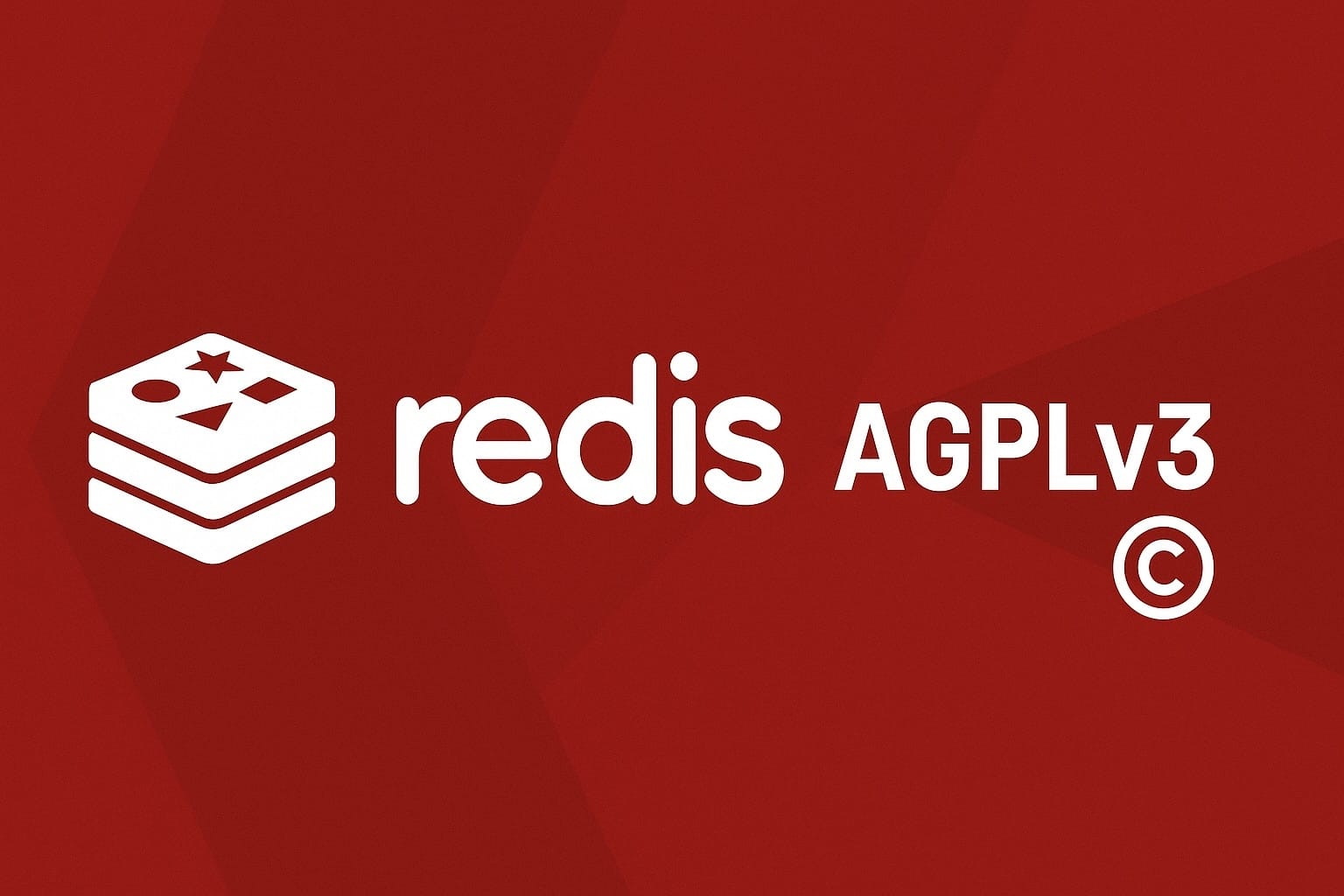Here’s the translated text:
—
After a year of controversies and diverging paths, Redis is once again embracing the open ecosystem with its version 8.0, which includes AGPLv3 licensing, significant performance improvements, and new features geared towards AI and big data.
Redis has officially launched Redis 8.0, accompanied by a news update that marks a turning point in its recent history: the introduction of AGPLv3 as an official option, alongside the existing SSPL (Server Side Public License) and RSAL (Redis Source Available License). With this decision, Redis Labs aims to rebuild bridges with an open-source community that felt betrayed following the licensing changes implemented in 2024.
This shift is seen as an attempt at reconciliation after the rift caused by abandoning licenses recognized by the Open Source Initiative (OSI). It’s worth noting that this move led to the creation of forks like Valkey —led by the Linux Foundation— and others like Redict, as well as the abandonment of Redis by various Linux distributions that opted for alternatives with fully open licenses.
A Tumultuous Year: Forks, Criticism, and the Hyperscaler Dilemma
It all began with a question that now haunts many open-source projects: how can we prevent cloud giants —like Amazon Web Services, Google Cloud, or Microsoft Azure— from extracting value from free software without giving anything in return?
MongoDB and Elastic responded with the SSPL, a controversial license that prohibits commercial use by cloud providers without releasing their infrastructure. Redis, in turn, adopted a similar route in March 2024, which broke the social contract with its developer and user base. The SSPL, while open in terms of source code, is not considered open source by the OSI, limiting its distribution on many community platforms.
The damage was immediate: Redis lost visibility in distributions like Debian and Fedora, and the ecosystem splintered. What began as a protective measure became isolation.
Redis 8.0: A Return to Roots… But Looking to the Future
The inclusion of AGPLv3 (Affero General Public License) as a third licensing option in Redis 8.0 is a clear signal of strategic correction. This is a truly free license approved by the OSI, which will allow Redis to regain its place in community environments while offering reasonable protection against non-reciprocal use in SaaS platforms.
However, version 8.0 is not limited to legal aspects. It also brings significant technical updates, making it one of the most relevant updates in recent years:
- New Data Type: Vector Sets, designed by the original creator of Redis, Salvatore Sanfilippo (“antirez”), who has returned to the project as an evangelist and strategic consultant.
- Full Integration of Redis Stack (JSON, time series, probabilistic structures, Redis Query Engine, etc.) within the core of Redis, all available under AGPLv3.
- More than 30 performance optimizations, including commands that are up to 87% faster and overall performance improvements of up to twice in intensive workloads.
- Strengthening of the client ecosystem, with new tools and a more open community collaboration policy.
New Leadership and Vision for the Future
Since the arrival of Rowan Trollope as CEO and the rejoining of Sanfilippo, Redis Labs has undergone a change in direction. In his official blog, Trollope acknowledges that the shift to SSPL “achieved its commercial purpose,” but at the cost of deeply damaging the relationship with the community.
“Adding AGPLv3 to Redis is more than a licensing option. It is a sign that we have listened, learned, and are committed to moving forward alongside the community that made this project possible,” says Trollope.
The company has made it clear that this is not about eliminating previous licenses but about offering flexibility to developers, companies, and communities, allowing them to choose the model that best fits their use case and legal environment.
Triple Licensing = Ambiguity or Realism?
While the community celebrates the return to an OSI-approved license, some observers point out that the coexistence of three licenses (AGPLv3, SSPL, and RSALv2) may lead to legal confusion and ecosystem fragmentation. Nevertheless, Redis seems willing to navigate this complexity in order to satisfy all its stakeholders: community developers, enterprise customers, and cloud platforms.
What is clear is that AGPLv3 will be the pathway for adoption in free, educational, and research environments, which until now had been forced to seek alternatives.
What Does This Mean for the Free Software World?
The story of Redis 8.0 reflects a broader dilemma affecting the entire open-source world: how to balance openness with economic sustainability in an environment dominated by major clouds. Redis has transitioned from shielding against “cloud grabs” to reopening to the ecosystem that made it a de facto standard in real-time systems, caching, and in-memory storage.
With this version, Redis aims to reconcile these two worlds: business pragmatism and the values of free software. And at least on paper, it does so with a solid technical proposal, a renewed vision, and an open door for dialogue.
Redis 8.0 is now available at redis.io, and its code can be used under AGPLv3, SSPL, or RSAL. The community now has the opportunity to decide whether this step is sufficient to heal the wounds of the past.

